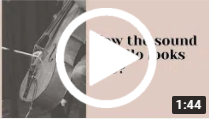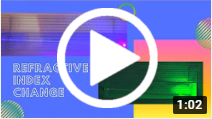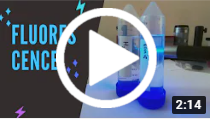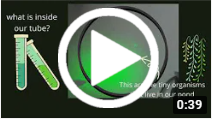Carotenoids are amazing molecules that, apart from many other functions in essentially all organisms, give color to many objects we encounter in our daily lives. The red color of tomato, the orange color of carrots, the yellow color of sunflower as well as the color of feathers of some birds, tropical fish or yellow to red colors many flowers, all these examples represent coloration due to carotenoids. In this short carotenoid overview, we provide some interesting facts about some of them. The list is far from being complete as there is nearly a thousand of different carotenoids described so far. Yet, we believe that even this short account will at least partly open the window into the world of these fascinating molecules that are essential for nearly all living organisms. (read more...)
 Do you want to observe sound? If so, watch our video and follow the instructions, it is easy!
Cut a plastic bottle to create a cone attached to the loud speaker,
stretch balloon around the top of the bottle and glue a small mirror to it.
Then point the laser pointer at the mirror, adjust the beam to hit the mirror in the middle and watch the reflection on the wall surface (black screen).
When you turn on the sound, the sound waves vibrate balloon membrane and in turn you can see the change of the beam pattern on the wall.
Do you want to observe sound? If so, watch our video and follow the instructions, it is easy!
Cut a plastic bottle to create a cone attached to the loud speaker,
stretch balloon around the top of the bottle and glue a small mirror to it.
Then point the laser pointer at the mirror, adjust the beam to hit the mirror in the middle and watch the reflection on the wall surface (black screen).
When you turn on the sound, the sound waves vibrate balloon membrane and in turn you can see the change of the beam pattern on the wall.

This experiment requires prior preparation. Put high concentration of the salt solvent into the glass aquarium. Leave it still for a couple of days. You will create the concentration gradient inside the aquarium. If you point your laser at the top of it you will observe the laser exiting the aquarium at similar height from the bottom surface. Going lower to the bottom you will observe the bending of the beam.

Absorption of UV (or visible) light from the ground state to the higher lying excited state of some molecules follows by the emission of photon due to return of the molecule to the ground state. The fluorescence has many applications, e.g. as analytical tool to determine the substance concentration, fluorescence labeling in biological tissue, and many others. Here we demonstrate some of the natural compounds that exhibit fluorescence under UV light.






